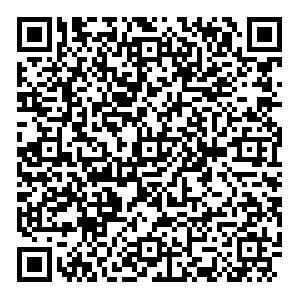Information Technology Revolution and School Education Reform: Reflection and Prospect
-
摘要: 2020年突如其来的一场疫情,引起人们对教育信息技术的空前关注。从历史的角度看,技术进展与学校教育教学之间的确存在互动关系,技术在推动教育教学形式和方法变革的同时,又不断地基于教育的社会需求寻获发展空间,但技术从未在根本上动摇教育教学中师生对话的关系构型。当代信息技术所具有的某些特性,赋予人们解构乃至颠覆所有传统模式的期待,然而它的效果并不如预期。至少在当前和可见的未来,信息技术革命未必能够带来一场教育学的革命。因为导致现代教育各种悖论和困境的主因是由外在社会结构决定的教育体制化逻辑,技术并不必然表现为一种解放性的力量,它可能促成教育既有功能的放大与内卷化,也可能带来教育固有价值属性的衰减和异化。因此,对于技术应用于教育需要持有开放而又谨慎的乐观。Abstract: The sudden outbreak of an epidemic in 2020 has aroused unprecedented attention to educational technology. From a historical viewpoint, there is indeed an interactive relationship between technological progress and school education. While technology promotes the transformation of teaching forms and methods, it constantly seeks development space from the social needs of education. However, technology has never fundamentally shaken the relationship configuration of tutor-student dialogue in education. Due to certain characteristics of contemporary information technology, some people expect to deconstruct and even subvert all traditional models, but its effect in reality is not ideal. At least for the present and foreseeable future, the information technology revolution may not necessarily bring about a pedagogy revolution. The main factor causing various current paradoxes and dilemmas of modern education lies in the education systematism which embody social structure rather than technology. Technology does not necessarily manifest itself as an emancipatory force. It may promote the amplification and involution of the existing functions of education, and may also cause the attenuation and alienation of the inherent value attributes of education. Therefore, we need to be open and cautiously optimistic about technological intervention and application.
-
Key words:
- education technology /
- school education /
- online teaching /
- effect
-
表 1 工业社会与信息社会中教与学理论的差异
维度 传统教与学理论模式 新的教与学理论模式 主动学习 教师安排活动 学习者自己决定活动安排 大班教学 小组 活动变化少 不同的活动安排 进度按计划 进度由学习者掌控 合作学习 无合作 团队工作 群体具有同质性 群体具有异质性 个人应对 彼此支持 创造性学习 复制性学习 创生性学习 根据已知解决问题 寻求解决问题的新方案 整合性学习 理论脱离实践 理论与实践融合 单独科目 重视科目之间的联系 学科为本 主题 一位教师 教师团队 评价性学习 教师主导 学生主导 终结性 诊断性 注:转引自Victoria L. Tinio:ICT in Education,2003. -
[1] 孙周兴. (2020). 海德格尔与技术命运论. 世界哲学,(5),77—88. [2] 约翰•伯纳姆. (2006). 科学是怎么败给迷信的: 美国的科学与卫生普及(钮卫星 译 ). 上海: 上海科技教育出版社. [3] 周午鹏. (2019). 技术与身体: 对 “技术具身” 的现象学反思. 浙江社会科学,(8),98—105. [4] Albirini, A. (2007). The crisis of educational technology, and the prospect of reinventing education. Journal of Educational Technology & Society, 10(1), 227—236. [5] Aviram, A. (2000). Beyond constructivism: Autonomy-oriented education. Studies in Philosophy of Education, 19(5), 465—489. [6] Bjerede, M., Atkins, K., & Dede, C. (2010). A special report: Ubiquitous mobile technologies and the transformation of schooling. Educational Technology, 50(2), 3—7. [7] Borgmann, A. (2013). So who am I really? Personal identity in the age of the Internet. AI & society, 28(1), 15—20. [8] Brown, M., McCormack, M., Reeves, J., Brook, D. C., Grajek, S., Alexander, B., Bali, M., Bulger, S., Dark, S., & Engelbert, N. (2020). 2020 Educause Horizon Report Teaching and Learning Edition (1933046031). [9] Carter, T. F. (1955). The Invention of Printing in China and its Spread Westward. New York: The Ronald Press. [10] Daniel, S. J. (2020). Education and the COVID-19 pandemic. Prospects, (49), 91—96. [11] Dewar, J., & Ang, P. (2007). The cultural consequences of printing and the internet. In Baron, S., Lindquist, E., & Shevlin, E. (Eds.). Agent of Change: Print Culture Studies after Elizabeth L. Eisenstein (pp. 365-377). Boston: University of Massachusetts Press. [12] Dittmar, J. E. (2011). Information technology and economic change: The impact of the printing press. The Quarterly Journal of Economics, 126(3), 1133—1172. doi: 10.1093/qje/qjr035 [13] Dreyfus, H. L. (2002). Anonymity versus commitment: the dangers of education on the internet. Educational Philosophy and Theory, 34(4), 369—378. doi: 10.1111/j.1469-5812.2002.tb00510.x [14] Duncheon, J. C., & Tierney, W. G. (2013). Changing conceptions of time: Implications for educational research and practice. Review of Educational Research, 83(2), 236—272. doi: 10.3102/0034654313478492 [15] Feenberg, A. (2005). Critical theory of technology: An overview. Tailoring Biotechnologies, 1(1), 47—64. [16] Fox, R. (2001). Constructivism examined. Oxford Review of Education, 27(1), 23—35. doi: 10.1080/03054980125310 [17] Freeman, S., Eddy, S. L., McDonough, M., Smith, M. K., Okoroafor, N., Jordt, H., & Wenderoth, M. P. (2014). Active learning increases student performance in science, engineering, and mathematics. Proceedings of the National Academy of Sciences, 111(23), 8410—8415. doi: 10.1073/pnas.1319030111 [18] Friesen, N. (2011). The lecture as a transmedial pedagogical form: A historical analysis. Educational Researcher, 40(3), 95—102. doi: 10.3102/0013189X11404603 [19] Gunaratne, S. A. (2001). Paper, printing and the printing press: A horizontally integrative macrohistory analysis. Gazette (Leiden, Netherlands), 63(6), 459—479. doi: 10.1177/0016549201063006001 [20] Hora, M. T. (2014). Limitations in experimental design mean that the jury is still out on lecturing. Proceedings of the National Academy of Sciences, 111(30), E3024—E3024. doi: 10.1073/pnas.1410115111 [21] Ison, D. C. (2012). Plagiarism among dissertations: Prevalence at online institutions. Journal of Academic Ethics, 10(3), 227—236. doi: 10.1007/s10805-012-9165-4 [22] Jefferies, P., Stahl, B. C., & McRobb, S. (2006). A framework for exploring the relationships among pedagogy, ethics &technology. Advances in Computer, Information, and System Sciences, and Engineering, 16(1), 433—440. [23] Laurillard, D. (2007). Modelling benefits-oriented costs for technology enhanced learning. Higher Education, 54(1), 21—39. doi: 10.1007/s10734-006-9044-2 [24] Lee, L. T. (2008). History and development of mass communications. In Luthra, R.(Ed.). Journalism and Mass Communication (pp. 158−183). Paris: UNESCO-EOLSS. [25] Livingstone, S. (2012). Critical reflections on the benefits of ICT in education. Oxford Review of Education, 38(1), 9—24. doi: 10.1080/03054985.2011.577938 [26] Means, B., Toyama, Y., Murphy, R., Bakia, M., & Jones, K. (2009). Evaluation of evidence-based practices in online learning: A meta-analysis and review of online learning studies. www.ed.gov/about/offices/list/opepd/ppss/reports.html. [27] Mosher, J. S. (2016). The protestant reading ethic and variation in its effects. Sociological Forum, 31(2), 397—418. doi: 10.1111/socf.12250 [28] Newton, D.(2020). Another problem with shifting education online: cheating. https://hechingerreport.org/another-problem-with-shifting-education-online-cheating/. [29] OECD, O. (2015). Students, computers and learning: Making the connection. Organisation for Economic Co-operation and Development (OECD) Programme for International Student Assessments. http://dx.doi.org/10.1787/9789264239555-en. [30] Poirier, T. I. (2017). Is lecturing obsolete? Advocating for high value transformative lecturing. American Journal of Pharmaceutical Education, 81(5). [31] Shapiro, J. J., & Hughes, S. K. (2001). The World Wide Web, the reorganization of knowledge, and liberal arts education. Educational Technology, 41(5), 12—16. [32] Stone, P., Brooks, R., Brynjolfsson, E., Calo, R., Etzioni, O., Hager, G., Hirschberg, J., Kalyanakrishnan, S., Kamar, E., & Kraus, S. (2016). Artificial intelligence and life in 2030. One Hundred Year Study on Artificial Intelligence: Report of the 2015—2016 Study Panel, 52. [33] Tampone, K.(2020). Is going to school in person obsolete? Cuomo wonders why ‘old model’ persists. https://www.msn.com/en-us/health/wellness/is-going-to-school-in-person-obsolete-cuomo-wonders-why-old-model-persists/ar-BB13DOVh. [34] Tinio, V. L.(2003). ICT in Education. New York: E-ASEAN Task Force. [35] UNESCO. (2020). Global Education Monitoring Report 2020: Inclusion and education: All means all. Paris: UNESCO. [36] Wingo,N. P., Ivankova, N. V., & Moss, J. A. (2017). Faculty perceptions about teaching online: Exploring the literature using the technology acceptance model as an organizing framework. Online Learning, 21(1), 15—35. -





 下载:
下载: 